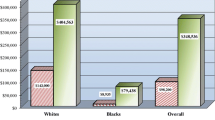Summary and Conclusion
In this paper, we have endeavored to analyze black-non-black differences in expenditure patterns as revealed by the 1972–73 BLS Consumer Expenditure Interview Survey Summary. Specific data shortcomings have been noted above. In addition, however, possible black-non-black differences in the propensity to misreport or withhold information may have affected the reliability of our findings. With these limitations in mind, the evidence of the survey data points to a main conclusion, namely, that although the “average” black consumer unit tended to spend a larger proportion of its after-tax income than the “average” non-black unit-just as the well-known stereotype implies-the statistical model underlying our analysis suggests that black consumer units with the same “characteristics” (after-tax income, family size, regional location, as well as the same age, education, and retired-nonretired status of family head) as the average non-black units tended to spend a smaller-not larger-proportion of their income than did the “comparable” non-black units. In addition, the model suggests that if Blacks maintained their own average characteristics but had the same “consumer behavior” as non-blacks, their APSp would rise substantially.
Similar content being viewed by others
About this article
Cite this article
Fareed, A.E., Riggs, G.D. Racial differences in consumer expenditure patterns, 1972–73. The Review of Black Political Economy 11, 293–301 (1981). https://doi.org/10.1007/BF02689691
Issue Date:
DOI: https://doi.org/10.1007/BF02689691




